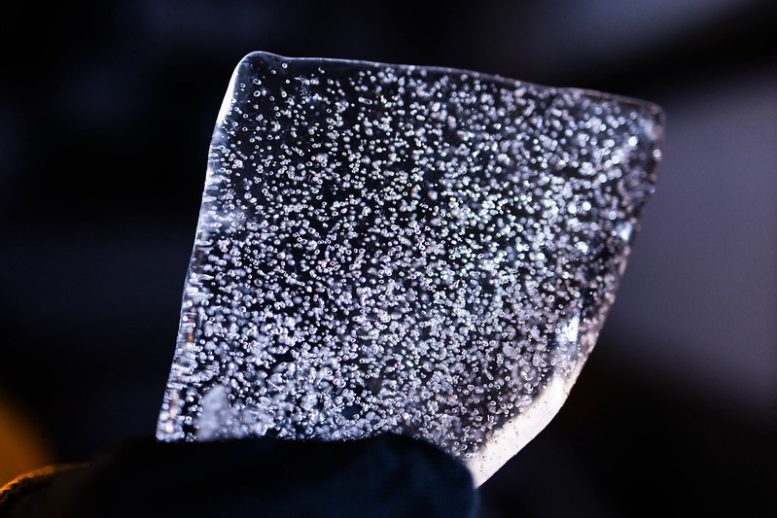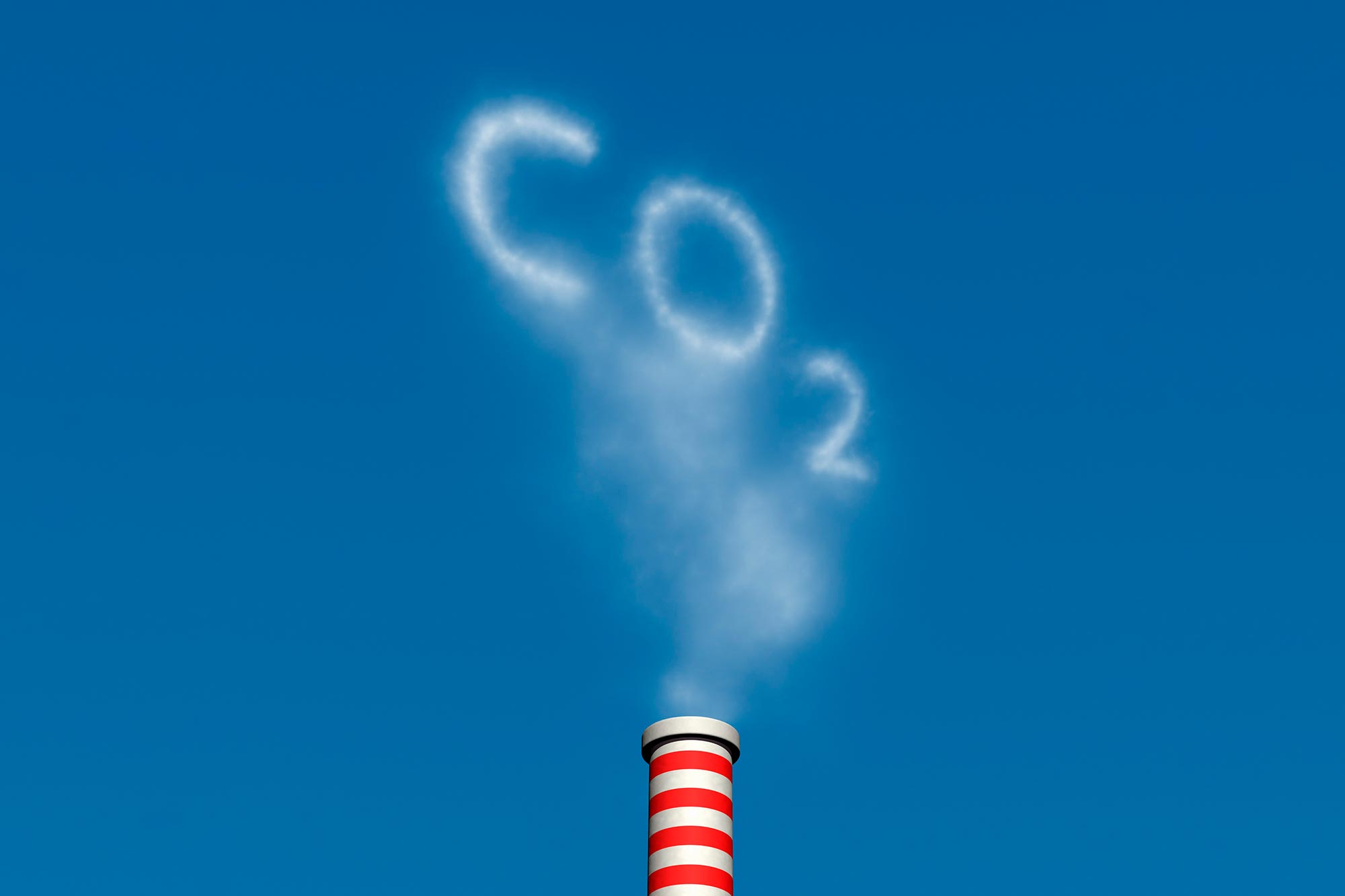Recent research indicates that the current rate of increase in atmospheric carbon dioxide is unprecedented, ten times faster than any period in the past 50,000 years, highlighting major implications for global climate dynamics and the Southern Ocean's capacity to absorb carbon dioxide in the future.
Researchers who conducted a detailed chemical analysis of ancient Antarctic ice have discovered that the current rate of increase in atmospheric carbon dioxide is ten times faster than at any time in the past 50,000 years.
The results, just published in Proceedings of the National Academy of Sciencesprovides an important new understanding of periods of abrupt climate change in Earth's past and offers new insight into the potential impacts of climate change today.
“Studying the past teaches us how different today's rate of carbon dioxide is2 “The change today is truly unprecedented,” said Kathleen Wendt, an assistant professor in the College of Earth, Ocean and Atmospheric Sciences at Oregon State University and lead author of the study.
“Our research has identified the fastest rates of natural carbon dioxide rise in the past ever recorded, and the rate at which it occurs today, driven largely by human emissions, is ten times higher.”
Carbon dioxide, or CO2, is a greenhouse gas that occurs naturally in the atmosphere. When carbon dioxide enters the atmosphere, it contributes to climate warming due to global warming. In the past, levels have fluctuated due to ice age cycles and other natural causes, but today they are rising due to human emissions.
Ice core analysis in Antarctica
The ice that has accumulated at the South Pole over hundreds of thousands of years includes ancient atmospheric gases trapped in air bubbles. Scientists use samples of this ice, collected by drilling cores up to 2 miles (3.2 kilometers) deep, to analyze trace chemicals and build records of past climate. The US National Science Foundation supported the ice core drilling and chemical analysis used in the study.
Previous research has shown that during the last ice age, which ended about 10,000 years ago, there were several periods when carbon dioxide levels appeared to jump well above average. Wendt said these measurements were not detailed enough to reveal the full nature of the rapid changes, limiting scientists' ability to understand what was happening.

A slice of the Antarctic ice core. Researchers study chemicals trapped in ancient ice to learn about past climate. Image credit: Katherine Stelling, Oregon State University
“You might not expect to see that at the end of the last ice age,” she said. “But our interest was piqued, and we wanted to go back to those periods and make measurements in more detail to see what was happening.”
Using samples of the ice core that divides the West Antarctic ice sheet, Wendt and his colleagues investigated what was happening during those periods. They identified a pattern that showed these jumps in carbon dioxide occurred alongside cold spells in the North Atlantic known as Heinrich events, which are associated with abrupt climate shifts around the world.
“These Heinrich events are really remarkable,” said Christo Boisert, associate professor in the School of Earth, Oceanic and Atmospheric Sciences and co-author of the study. “We think it's caused by the dramatic collapse of the North American ice sheet. This starts a chain reaction that involves changes in the tropical monsoon, the westerly winds in the Southern Hemisphere, and these big burps of carbon dioxide.”2 coming out of the oceans.”
Compare natural and current increases of carbon dioxide
During the largest natural increases, carbon dioxide increased by about 14 parts per million over 55 years. The jumps occurred once every 7,000 years or so. At today's rates, the size of the increase would take only 5 to 6 years.
Evidence suggests that during past periods of natural CO2 rise, westerly winds that play an important role in deep-ocean circulation were also intensifying, leading to a rapid release of carbon dioxide from the Southern Ocean.
Other research has indicated that these westerly winds will strengthen over the next century due to climate change. The new findings suggest that if this happens, it will reduce the ability of the Southern Ocean to absorb human-generated carbon dioxide, the researchers noted.
“We depend on the Southern Ocean to absorb part of the carbon dioxide we release, but rapidly increasing southerly winds are weakening its ability to do so,” Wendt said.
Reference: “The Southern Ocean has been driving carbon dioxide into the atmosphere for decades2 “Rising through Heinrich Stadiales” by Kathleen A. Wendt, Christoph Nierpas-Ahls, Kyle Niezgoda, David Nunn, Michael Kalk, Laurie Mainville, Julia Gottschalk, James W. B. Ray, Jochen Schmidt, Hubertus Fischer, Thomas F. Stocker, Juan Muglia, David Ferreira, Sean A. Marcotte, Edward Brook and Christo Boisert, May 13, 2024, Proceedings of the National Academy of Sciences.
doi: 10.1073/pnas.2319652121
Additional co-authors include Ed Brock, Kyle Niezgoda, and Michael Kalk of Oregon State; Christoph Neerbas-Ahles University of Bern in Switzerland and the National Physical Laboratory in the United Kingdom; Thomas Stocker, Jochen Schmidt, and Hubertus Fischer of the University of Bern; Laurie Mainville of the University of New South Wales in Australia; James Rae from the University of St Andrews, UK; Juan Muglia from Argentina; David Ferreira of the University of Reading in the United Kingdom and Sean Marcotte of the University of Wisconsin-Madison.
The study was funded by the US National Science Foundation.

“Extreme travel lover. Bacon fanatic. Troublemaker. Introvert. Passionate music fanatic.”







More Stories
A fossilized creature may explain a puzzling drawing on a rock wall.
MrBeast Sued Over ‘Unsafe Environment’ on Upcoming Amazon Reality Show | US TV
Watch comets Lemmon and SWAN approach Earth today